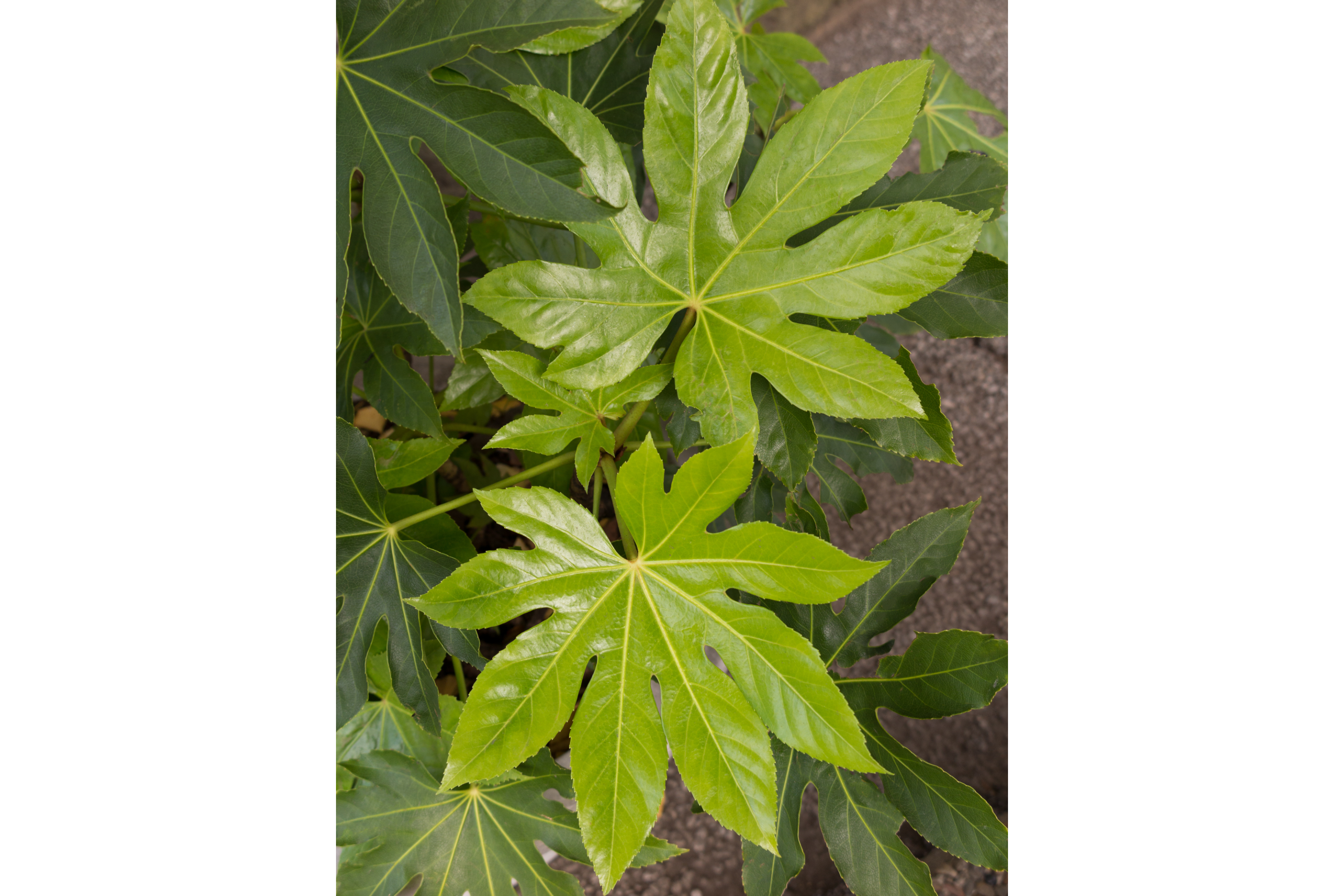Fatsia oligocarpella
(Fatsia oligocarpella)

Description
Fatsia oligocarpella is a species of flowering plant in the family Araliaceae, native to the Bonin Islands and the Volcano Islands, both belonging to Japan. Fatsia is a small genus of three species of evergreen shrubs in the family Araliaceae native to southern Japan and Taiwan. They typically have stout, sparsely branched stems bearing spirally-arranged, large leathery, palmately lobed leaves 20–50 cm in width, on a petiole up to 50 cm long, and small creamy-white flowers in dense terminal compound umbels in late autumn or early winter, followed by small black fruit. The genus was formerly classified within a broader interpretation of the related genus Aralia. Fatsia japonica (fatsi, Japanese aralia, glossy-leaved paper plant, false castor oil plant, fig-leaf palm) is a shrub growing to 3–6 m tall. The leaves have 7–9 broad lobes, divided to half or two-thirds of the way to the base of the leaf; the lobes are edged with coarse, blunt teeth. Fatsia oligocarpella, from the Bonin Islands, differs in the lobes on the leaves being less coarsely toothed, but is otherwise very similar. It is naturalised in Hawaii. Fatsia polycarpa is native to Taiwan's mountainous areas. The leaves have 9–13 deep, narrow lobes, divided nearly to the base of the leaf. Some authors treat it in a separate genus, as Diplofatsia polycarpa. A sterile hybrid between Fatsia japonica and Hedera hibernica, named × Fatshedera lizei, has been produced in cultivation in western Europe in both plain green and variegated forms. Some species formerly included in Fatsia are now classified in other genera. Fatsia papyrifera is now Tetrapanax papyrifer and Fatsia horrida is now Oplopanax horridus.
Taxonomic tree:







